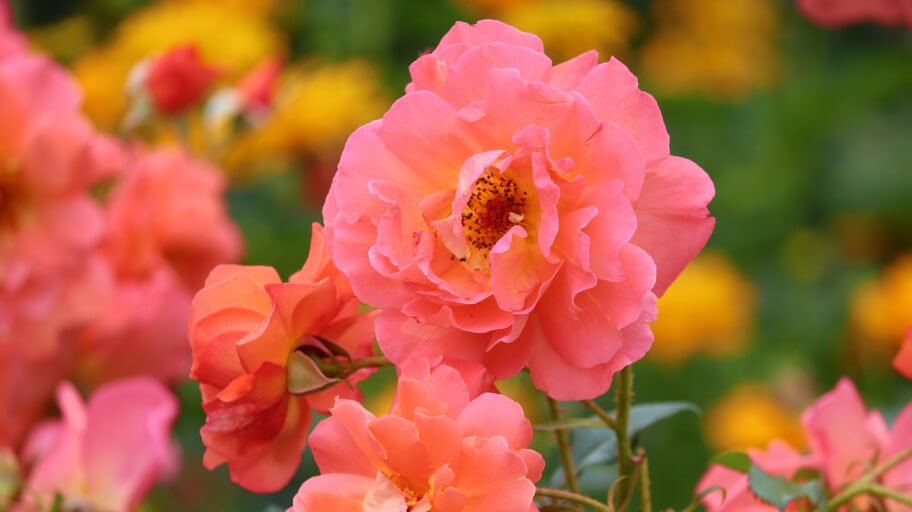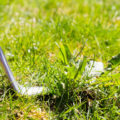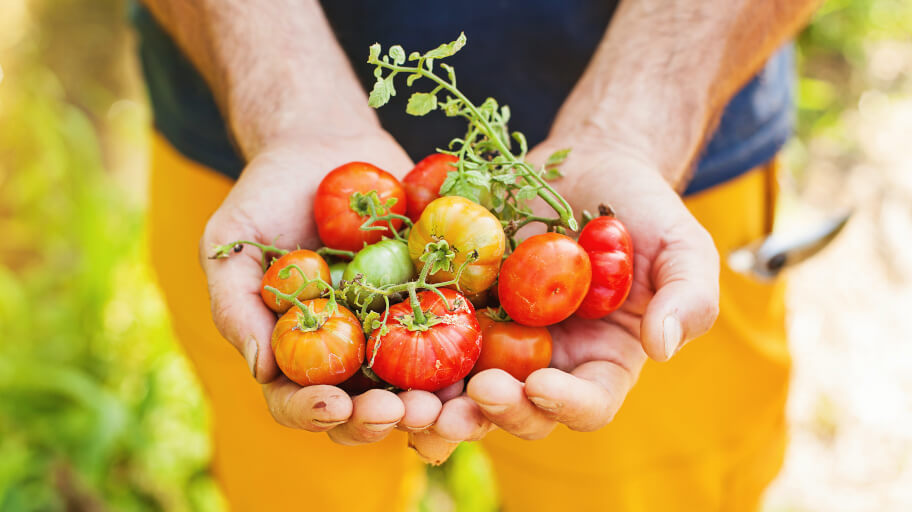
Roses are hands-down the most poetic blossoms and they present some of the most exquisite vegetation in any garden. Well-pruned roses are more “immune” to disease, promote air circulation, and result in larger, opulent flowers. Left unpruned, they will still bloom, but with a rather unkempt look and we all know how great a well-maintained garden looks.
If you are having second thoughts about pruning, then don’t. Even if you are not an experienced gardener, you can still achieve beautiful results! That is exactly why we’ve created this guide for anyone in Australia who wants to learn how to skilfully prune their roses.
What is the best time to prune roses in Australia?
Roses need pruning at least twice a year, but the essential pruning happens in late winter. For Australia, the best time is June-July. However, if you live in colder areas, you can wait until later in August.
If the mornings are still frosty, it’s better to delay pruning. This way you will be promoting better air circulation and avoid tender rose growth so that the frost doesn’t destroy the new shoots. Summer pruning, on the other hand, is more straightforward – you have to snip off the spent flowers a couple of centimetres below their blossom. Don’t shy away from the scissors – well-done pruning will result in excellent, substantial new growth in spring.
How to prune your roses for a healthy growth
Cutting back roses is not a unified process and it probably won’t be a surprise to know that different types need different approaches to pruning. They have a reputation for being difficult to maintain, yet correct watering and pruning will result in abundant healthy bushes. So, let’s get started!
What you will need:
- Garden gloves: you can’t call yourself a gardener until you have at least a pair of these.
- Clean, sharp secateurs: sharp and clean blades cut cleanly and reduce the risk of disease being spread.
- Lime sulphur: a spray to control fungi, bacteria and insects; not mandatory, but good to have.
Pruning standard roses
Now that you’ve got all the equipment ready, it is time to get to work. Like we’ve mentioned before, the most suitable time for pruning roses in Australia is winter. Therefore, the tips you see below are specifically for winter pruning of standard type of roses.
- Always look to prune deadheads back to healthy tissue. You will recognise this by its tender green bark and white pith core.
- Investigate the stem and remove any weak-looking, spindly sections – cut to the base of the shoot. If the bush is well established, then look to cut old, woody canes. Saw them cleanly off at the bottom.
- The remaining of the stalk has to be pruned to one third – don’t be afraid of making those clean cuts. Make sure to angle the cut to 45 degrees and look outwards as this is the part that will grow the new bud – it should head in a good direction.
- Look at the root structure – remove “suckers” (or shoots if you prefer a more politically correct term) as close to the main root cane as possible.
- Change the point of view – like a good artist of your garden masterpiece, learn to step back and observe. Do the remaining canes look healthy and ready to create life vigorously? Does the centre of the bush look open to sun and air?
- Suppose you have a sulphur solution then spray the whole rose and the soil beneath it. Before you do so, make sure to clean any debris or remaining foliage. A tidy garden means better growth and no pests.
Deadheading
To promote novice rose growing and encourage them to put out a second flush late in summer, you should do regular deadheading. It’s a simple and straightforward process – take the flower bud and cut it to the node beneath it. That will tidy up the plant nicely and stop the rose from producing unwanted seeds and wasting energy.
Trimming climbing roses
The essential thing you need to know when pruning climbing roses, is to distinguish the main cane and the lateral cane. The main cane grows from the plant’s base, and the side shoots or lateral cane grow off the main rods. You might have figured by now you shouldn’t cut off the main canes but only the laterals. Make sure to remove a third of the oldest bat at the base of the plant.
With climbing roses it’s important to train them by weaving or tying new canes together to a supporting structure – wall or a fence. Climbing roses are a perfect fit for the Australian home with trellises in their garden. At the end of the day, the blossoms have to climb with support by a frame.
Bush rose pruning
The perfect scenario is to leave only one main branch, so check the base of the plant for really old, thick wood. Remove it entirely with the sharp blade – it will promote a younger, healthier stem growth. If you’ve left your roses unpruned, then a radical cut can do miracles to open up the structure and promote good air circulation. Otherwise, the rule of thumb is to reduce the bush’s height by a third or a half.
Pruning weeping roses
If you feel reluctant to take out the blades and start pruning your weeping rose, then your instincts are right! Unlike other types of rose, the weeping kinds perform best when they’re left unpruned. Still, if you feel like you need to provide some maintenance, stick to deadheading and just light trimming here and there when necessary.
Why you shouldn’t skip on the pruning?
If you don’t prune your roses, it will result in poor blossoms, weird-looking stems and unpleasant appearance. Moreover, your flowers might get fungi or produce unhealthy growth. Disregarding the process will also result in dehydration with dead and soggy, blackish canes.
However, intentional and well-done cutting will accelerate the development of higher quality blossoms. If you skip it, you will notice that old stems have short twiggy shoots and the plant loses its vigour.
Takeaways
- Pruning is a necessary process to promote healthy and vigorous blossoms, as well as control the size and neatness of rose plants.
- It requires minimum equipment, and unlike other gardening tasks it’s not strenuous work.
- Pruning is best done from July to August in Australia. Avoid pruning if mornings are still frosty.
- Different types of roses require different cuts, yet the concept is the same – 45 degrees angle pointing outward, remove old woody canes and twisty looking stems.
- Make sure you remove all debris to keep the soil aired and protect from bacteria.
Rose pruning didn’t go as planned? We can help!
The Fantastic gardeners can help!







